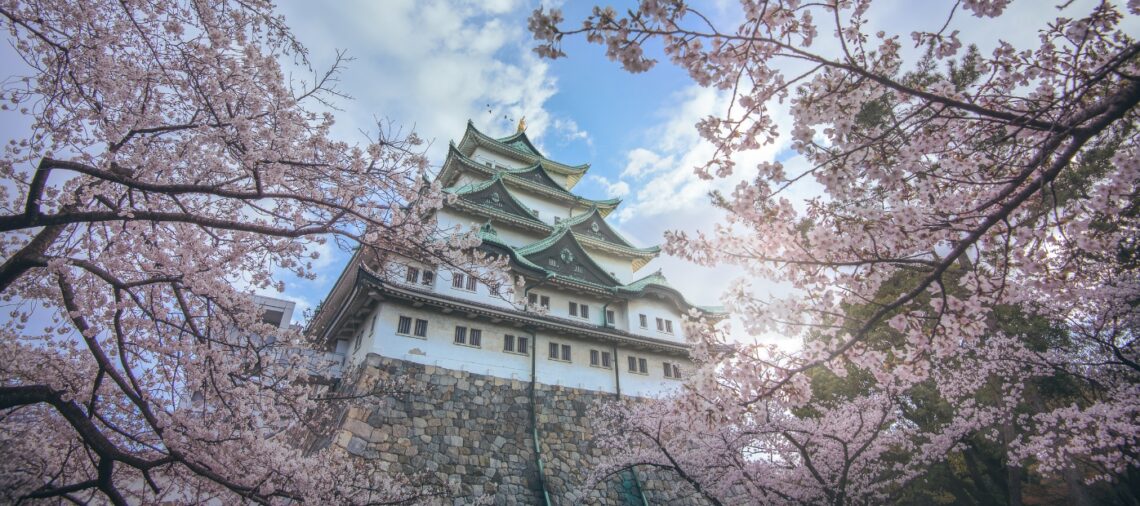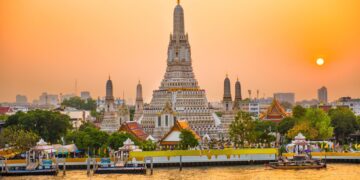Japan is renowned for its rich cultural heritage and fascinating history. One of the country’s greatest treasures lies in its many historic castles, which testify to Japan’s past. These famous castles in Japan are not mere structures but serve as gateways to a bygone era. Exploring these traditional Japanese castles is like stepping back in time, where you can immerse yourself in the grandeur and allure of ancient Japan. These historical sites in Japan are must-visit destinations for locals and tourists alike, offering a glimpse into the country’s feudal past and architectural marvels. Here are the top 10 historic castles in Japan.
A Journey Through Time: The History of Japanese Castles
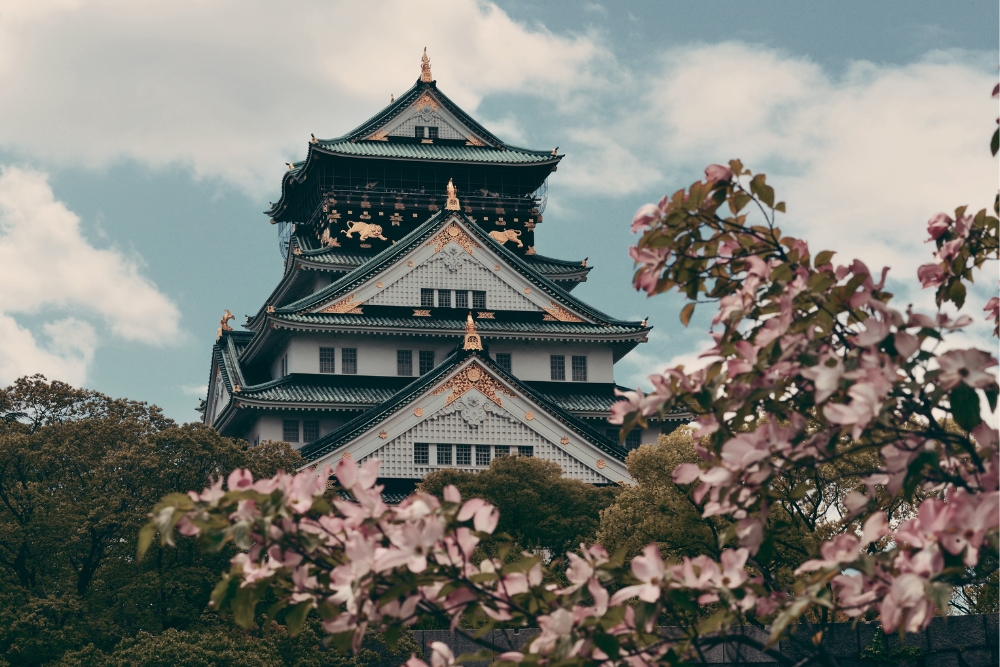
Japanese castles have a long and rich history that dates back centuries. These architectural marvels have evolved from simple wooden stockades to the iconic structures we recognize today. Let’s delve into Japanese castles’ origins, purpose, and construction.
The Origins of Japanese Castles
The history of Japanese castles can be traced back to the 15th century, during a time of political strife and feudal warfare known as the Sengoku period. As conflict became more prevalent, feudal lords sought to establish fortifications to defend their territories and consolidate their power.
Initially, these fortifications were simple earthwork structures, known as yamashiro, built on elevated terrain for strategic advantage. Over time, the design and construction of castles evolved, incorporating stone walls and moats for enhanced defense.
The Purpose of Japanese Castles
Japanese castles served a variety of functions beyond mere defense. They were central hubs for strategic control, governance, and residence for feudal lords and their families.
The primary purpose of these castles was to provide protection against attacks from rival clans and offer a stronghold for defense during times of conflict. The strategic placement of castles allowed feudal lords to exert control over their territories and maintain a balance of power.
The Construction and Evolution of Japanese Castles
Japanese castles were constructed using a combination of wood, stone, and mortar. The wooden components included intricate latticework, sliding doors, and ornate decorations. Meanwhile, stone walls were added for added durability and defense.
Many castles were destroyed and rebuilt throughout history due to warfare, natural disasters, and political shifts. Despite these challenges, the resilience of the Japanese castle builders allowed for the preservation and restoration of these impressive structures.
Architectural Marvels of Ancient Japan
When it comes to the architecture of Japanese castles, they are truly marvels to behold. These castles were designed with careful thought and attention to detail, showcasing the ingenuity and skill of the craftsmen who built them.
One distinctive feature of Japanese castles is the use of huge stone walls and moats as a means of defense. These walls were not only functional but also served as imposing structures that added to the grandeur of the castles.
You’ll find tile-roofed buildings unique to Japanese castles within the castle compounds. These buildings, with their intricate designs and vibrant colors, add a touch of elegance to the overall architecture.
The design of Japanese castles also considered the social structure of the time. Samurai residences were separated by rank, with higher-ranking samurai residing in more prestigious areas of the castle. Additionally, the castles had separate living arrangements for peasants and commoners, with designated areas outside the main castle compound.
What sets Japanese castles apart from their European counterparts is their unique features. While European castles are known for their towering keeps and fortified walls, Japanese castles showcase a blend of strength and artistic beauty. The combination of stone walls, tile roofs, and intricate interiors creates a captivating architectural style that is distinctly Japanese.
The Grandeur of Osaka Castle
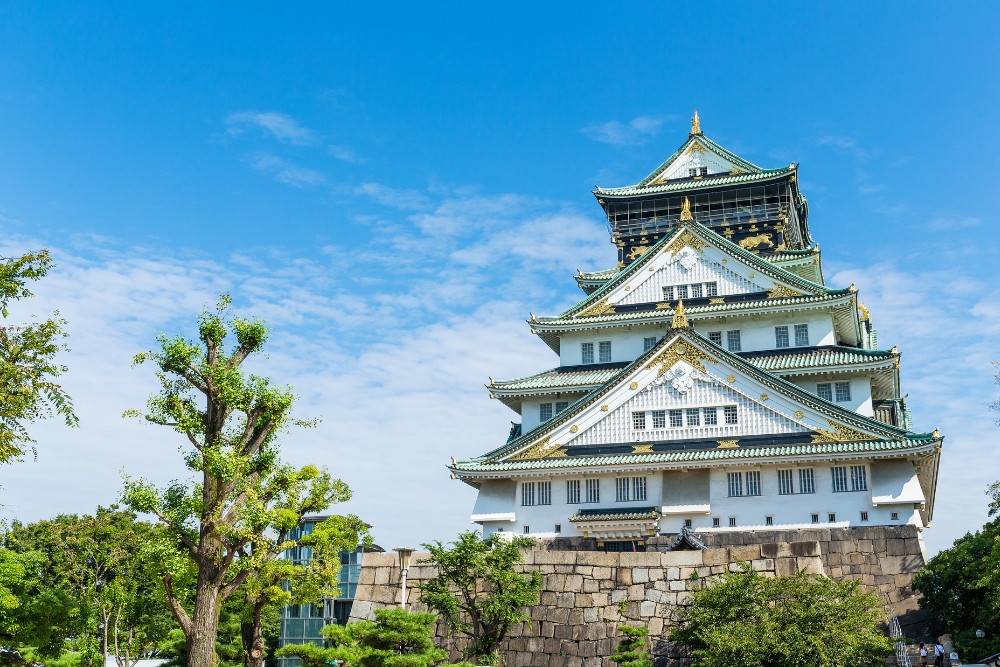
The construction of Osaka Castle dates back to the 1580s, making it a significant historical landmark in Japan. At the time of its construction, Osaka Castle was the largest castle in the country, standing as a symbol of power and prestige. It played a crucial role in the unification of Japan during the Azuchi-Momoyama period.
Today, Osaka Castle is known not only for its historical significance but also for its natural beauty. The castle is renowned as one of the country’s top cherry blossom viewing locations. During the spring season, the surrounding park is ablaze with the vibrant colors of cherry blossoms, attracting visitors from all over the world.
One of the main attractions within Osaka Castle is the observation platform located at the top of the castle tower. Visitors can enjoy panoramic city views and appreciate the castle’s architectural grandeur from this vantage point. Additionally, the castle houses a history museum that provides in-depth insight into the castle’s history and the events that shaped Japan’s feudal era.
Himeji Castle: A UNESCO World Heritage Site
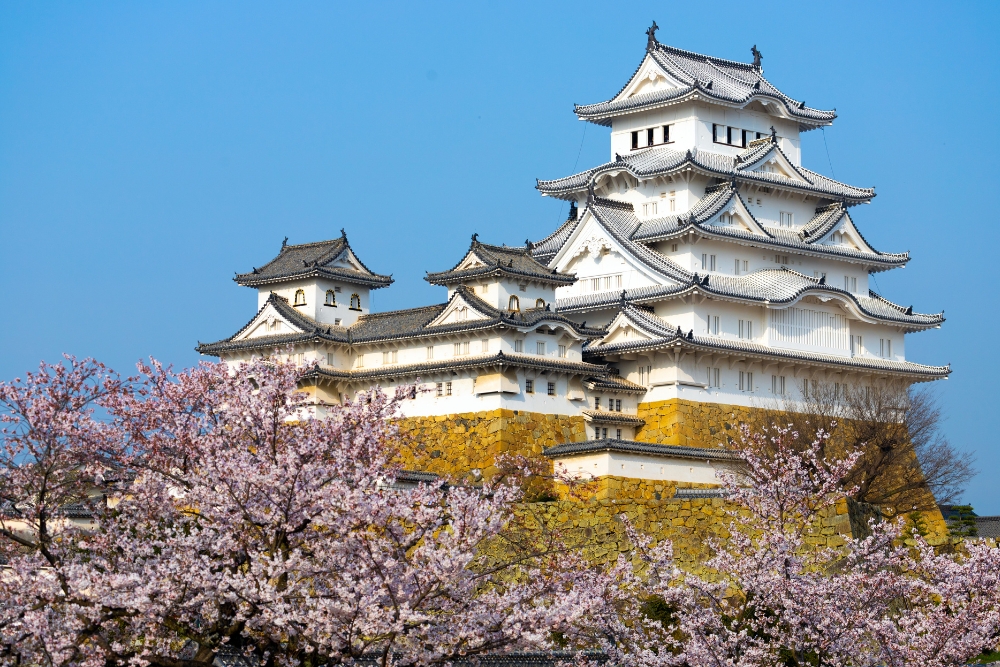
Himeji Castle, also known as the “White Heron Castle,” is a true marvel of architecture and a UNESCO World Heritage Site. Its pristine, bright appearance and historical significance make it a must-visit destination for travelers in Japan.
Having earned its nickname due to its resemblance to a graceful white heron in flight, Himeji Castle stands as a symbol of beauty and elegance. Its gleaming white walls and towering structure are a testament to the craftsmanship of the past and the rich cultural heritage of Japan.
Designated as a UNESCO World Heritage Site in 1993, Himeji Castle is recognized for its outstanding universal value. It is considered one of the best-preserved examples of traditional Japanese castle architecture. The castle’s construction dates back to the 14th century, with additional expansions and renovations resulting in its current magnificent form.
Stepping inside Himeji Castle is like stepping back in time. Its impressive architecture showcases defensive features such as sturdy stone walls, moats, and strategically placed watchtowers. The intricate details and craftsmanship found throughout the castle are a testament to the skill and dedication of the craftsmen who built it.
One of the most breathtaking experiences at Himeji Castle is witnessing the beauty of cherry blossoms in full bloom. The castle’s expansive grounds and surrounding gardens provide a picturesque backdrop for cherry blossom viewing, attracting locals and tourists alike.
Visiting Himeji Castle offers a unique opportunity to immerse oneself in Japanese history and culture. The castle’s significance extends beyond its architectural beauty as a tangible link to the country’s feudal past. Exploring its halls and courtyards offers a glimpse into the life of feudal lords and the strategies employed for defense and governance.
As one of Japan’s most iconic landmarks, Himeji Castle continues to captivate visitors with its beauty, historical significance, and stunning architecture. Its status as a UNESCO World Heritage Site further enhances its appeal, making it a must-see destination for those seeking to discover Japan’s rich cultural heritage.
Okayama Castle: The Impressive ‘Crow Castle’
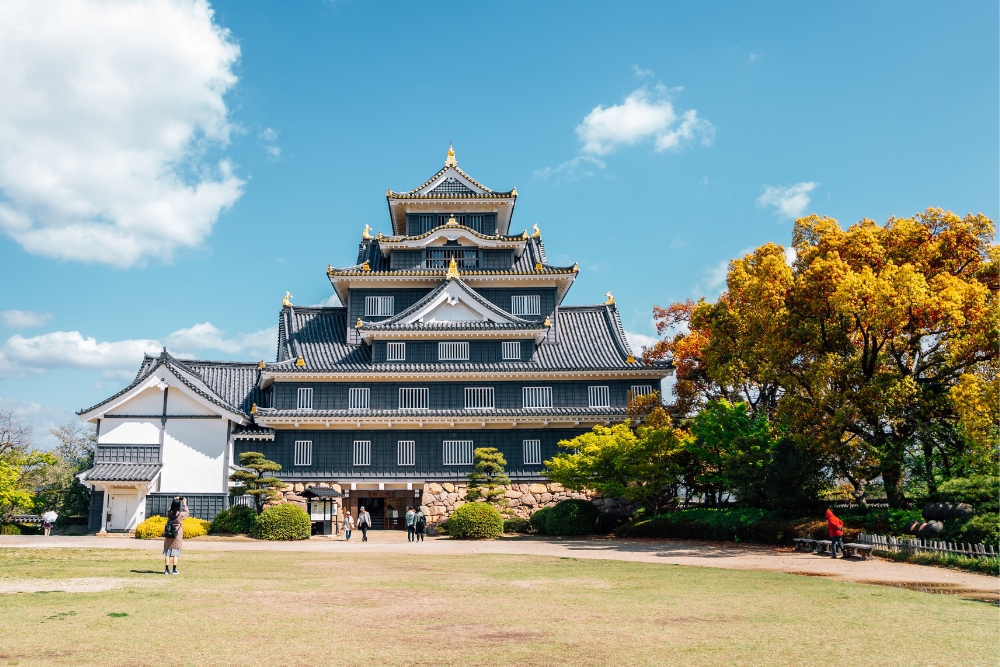
Okayama Castle, often called the ‘Crow Castle’, is a fascinating historical landmark in Japan with its unique features. This magnificent castle is renowned for its black-hued façade, earning it the apt nickname of the ‘Crow Castle’.
The construction of Okayama Castle dates back to the Azuchi-Momoyama period, characterized by its fusion of architectural styles from different regions. The castle’s design showcases a remarkable blend of defensive and aesthetic elements, making it a true engineering marvel.
Located near the enchanting Korakuen Garden, Okayama Castle offers visitors a perfect opportunity to immerse themselves in natural beauty and rich history. The castle’s proximity to this renowned garden enhances the area’s overall charm and provides a delightful experience for tourists.
An outstanding feature of Okayama Castle is its original moon-viewing turret. This distinctive element evokes a sense of nostalgia and offers visitors a glimpse into the historical significance of the castle. It serves as a reminder of the castle’s past, providing a unique insight into the duality of functional defense and aesthetic appeal that defines Japanese castles.
Nijo Castle: A Shogun’s Stronghold in Kyoto

Located in Kyoto, Nijo Castle is a remarkable historical site that served as a stronghold for a powerful shogun. This imposing castle was originally constructed in the 1600s and continues to captivate visitors with its rich history and unique features.
One of the most fascinating aspects of Nijo Castle is its intentional installation of creaky floorboards known as “nightingale floors.” These wooden floors were designed to make noise when walked upon, serving as a security feature to alert against potential intruders. This clever innovation showcases the strategic considerations and defensive capabilities of the castle.
Nijo Castle has been recognized as a UNESCO World Heritage Site, highlighting its historical significance and cultural value. The castle’s distinctive architecture and features, including its ornate gates and beautiful gardens, draw visitors worldwide.
Visitors can explore various buildings throughout the castle grounds, each with unique characteristics. The Ninomaru Palace, for instance, features elaborate paintings and intricate woodwork, providing a glimpse into the opulence of the shogun’s residence. The expansive gardens surrounding the castle offer a tranquil retreat and showcase traditional Japanese landscaping techniques.
As you wander through the halls and courtyards of Nijo Castle, you’ll gain a deeper appreciation for its historical importance and grandeur. This shogun’s stronghold stands as a testament to Japan’s feudal past and symbolizes the country’s rich cultural heritage.
Hikone Castle: A Testament to Feudal History
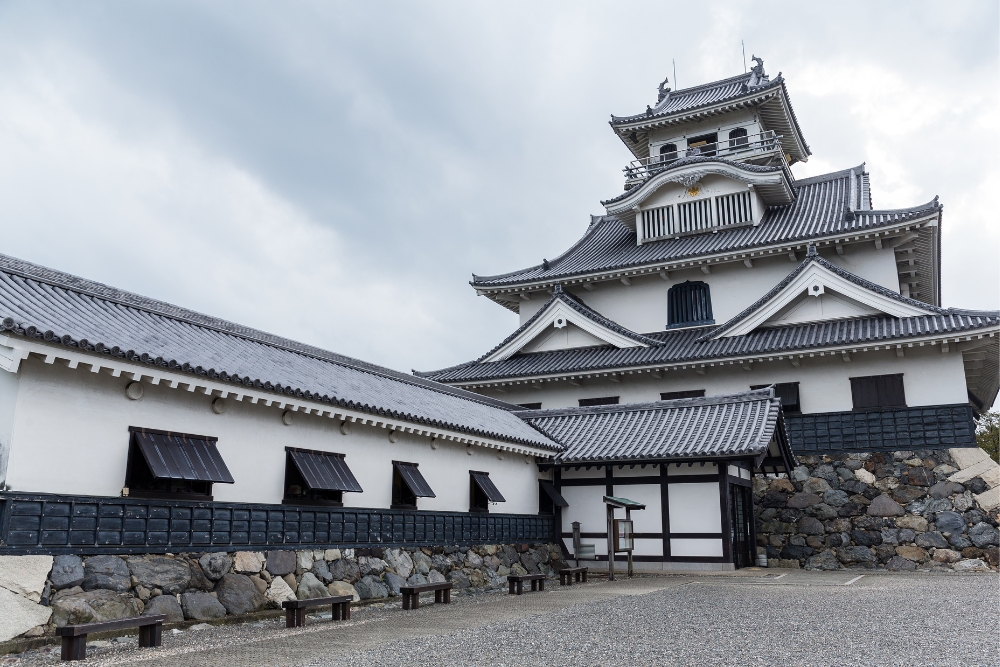
Hikone Castle is a testament to Japan’s feudal history, captivating visitors with its rich heritage and well-preserved architecture. As one of the few remaining original castles in the country, Hikone Castle offers a unique glimpse into the past.
With a history dating back over 400 years, Hikone Castle served as a seat for feudal lords during the Edo period. The castle played a crucial role in the defense and governance of the region, representing the power and influence of the ruling samurai class.
What sets Hikone Castle apart is its remarkably preserved features. The castle keep, known as the tenshu, stands proudly with its imposing black exterior, offering panoramic views of the surrounding area. The well-maintained guard houses and stone walls further enhance the castle’s authenticity.
Not only does Hikone Castle provide a glimpse into feudal history, but it also showcases the unique architectural features of Japanese castles. The intricate wooden construction, the imposing stone walls, and the strategic layout all demonstrate the ingenuity and craftsmanship of the time.
Located in the city of Hikone, the castle is conveniently situated near other attractions such as Lake Biwa, Japan’s largest lake, and the picturesque Hikone Castle Gardens. Visitors can immerse themselves in the beauty of the surrounding area while exploring this remarkable piece of history.
The Iconic Matsumoto Castle in Nagano
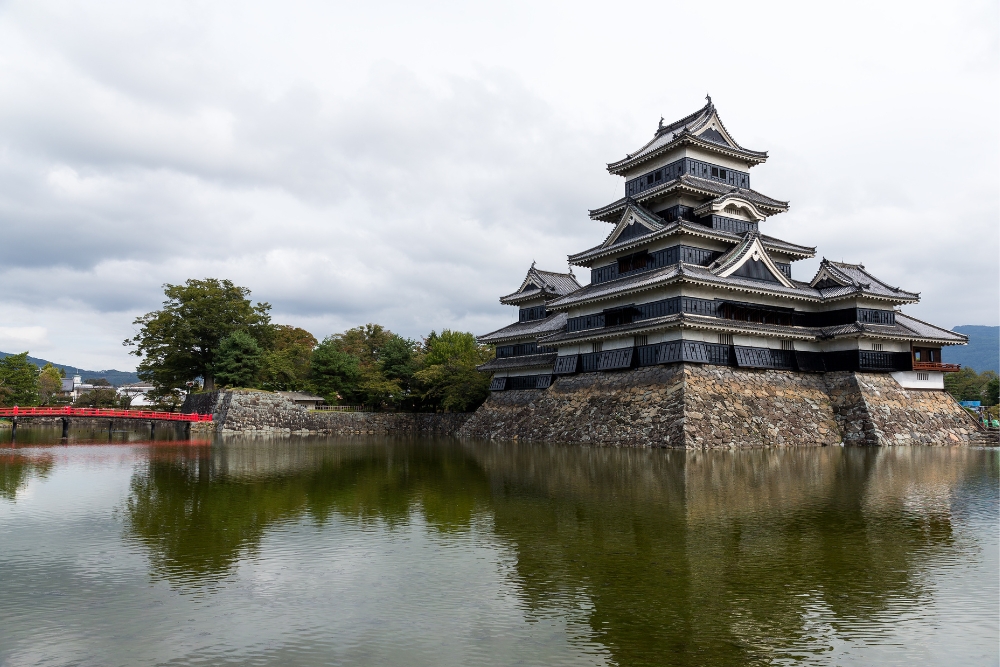
Matsumoto Castle is a true architectural masterpiece and one of Japan’s most iconic landmarks. Located in Nagano, this historic castle is renowned for its impressive exterior and rich cultural significance.
The beauty of Matsumoto Castle lies in its unique black-and-white color scheme, earning it the nickname “Crow Castle.” The contrast between the dark wooden exterior and the white plaster walls creates a striking image that distinguishes it from other Japanese castles.
Surrounded by breathtaking natural scenery, Matsumoto Castle offers visitors a glimpse into the past and a chance to step back in time. The castle’s gardens, particularly, are a must-visit attraction, especially during cherry blossom season. The meticulously maintained gardens provide a picturesque backdrop for capturing stunning photos and immersing oneself in the beauty of nature.
As a historical landmark, Matsumoto Castle holds great significance. Constructed in the 16th century, it served as a stronghold for feudal lords and witnessed numerous battles throughout its history. Today, it is a testament to Japanese heritage and a symbol of the country’s architectural prowess.
With its rich history, breathtaking beauty, and stunning surroundings, Matsumoto Castle is a must-see attraction for anyone visiting Nagano. Whether you’re a history enthusiast, a nature lover, or simply seeking a glimpse into Japan’s past, this iconic castle will leave you in awe.
The Resilient Keep of Hirosaki Castle
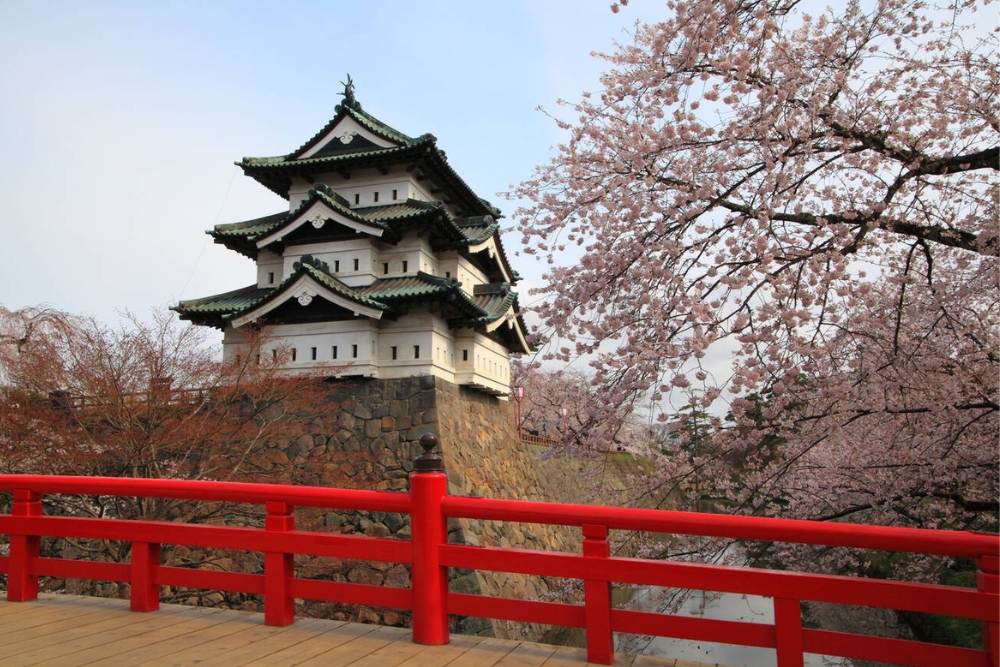
Hirosaki Castle is steeped in historical significance as it stands proudly as a testament to the feudal past of Japan. Built by the Tsugaru Clan in the early 17th century, this impressive castle has endured the test of time, surviving destruction and reconstruction.
The castle keep, a central and essential structure of Hirosaki Castle, showcases the architectural prowess of the era. It serves as a reminder of the strategic importance and power held by the feudal lords who resided within its formidable walls.
Although the original castle keep was lost to a fire, the resilience of Hirosaki Castle is evident in the surviving elements that still exist today. Notable features include the fortified moats and castle gates, which serve as a tangible link to the castle’s rich history.
Hirosaki Castle’s location within Hirosaki Park enhances its allure, where the castle and the park seamlessly blend, creating a picturesque setting. The castle grounds become especially popular during the cherry blossom season, attracting visitors from near and far.
Despite the challenges faced by Hirosaki Castle over the centuries, its resilience and enduring presence continue to captivate both locals and tourists alike. The keep stands as a symbol of the castle’s historical significance and a testament to the rich cultural heritage of Japan.
Nagoya Castle: Panoramic Views and Living History
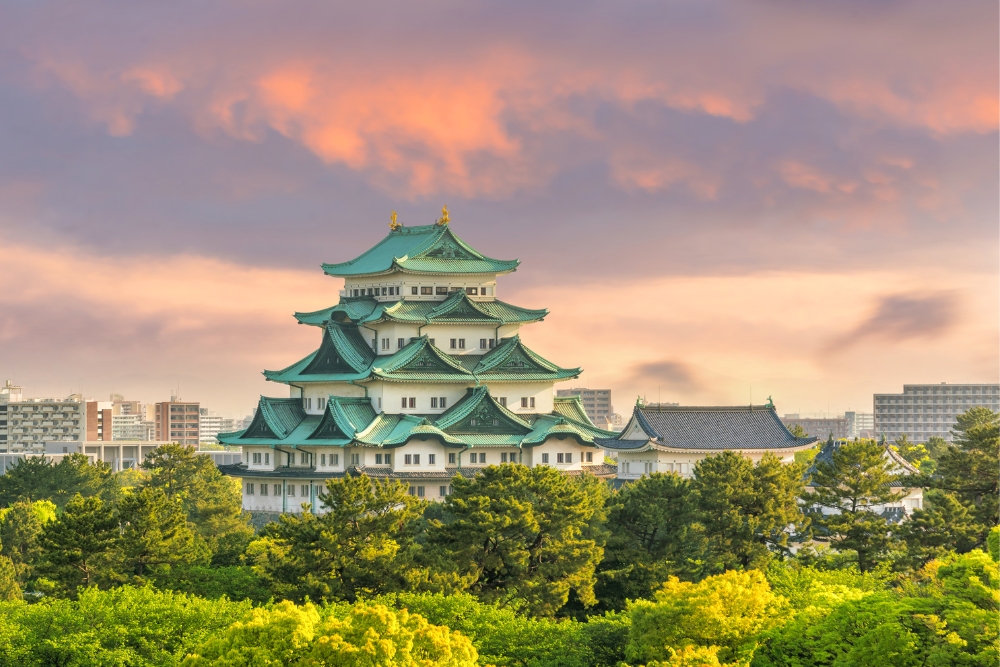
Nagoya Castle, located in Nagoya, Japan, is an iconic symbol of the Edo period. With its rich history and architectural beauty, this castle attracts visitors from all over the world. One of Nagoya Castle’s main highlights is its breathtaking panoramic views from its six-story structure. Visitors can climb to the top and marvel at the stunning vistas of the surrounding city and landscapes.
What sets Nagoya Castle apart is the living history experience it provides. As you explore the castle grounds, you’ll encounter individuals dressed in period attire, portraying historical figures from the Edo period. This immersive experience lets visitors step back and better understand the castle’s historical significance.
Another popular attraction of Nagoya Castle is its cherry blossom viewing. The castle’s expansive grounds become a picturesque wonderland in spring as cherry blossoms bloom in vibrant hues. Visitors can stroll along the castle grounds, capturing breathtaking photos and immersing themselves in the beauty of nature.
Whether you’re a history enthusiast, architectural admirer, or nature lover, visiting Nagoya Castle is a must. Experience the panoramic views, immerse yourself in living history, and witness the stunning beauty of cherry blossoms. Nagoya Castle truly offers a unique and unforgettable experience for visitors of all ages.
Kanazawa Castle: Gateway to Kenrokuen Garden
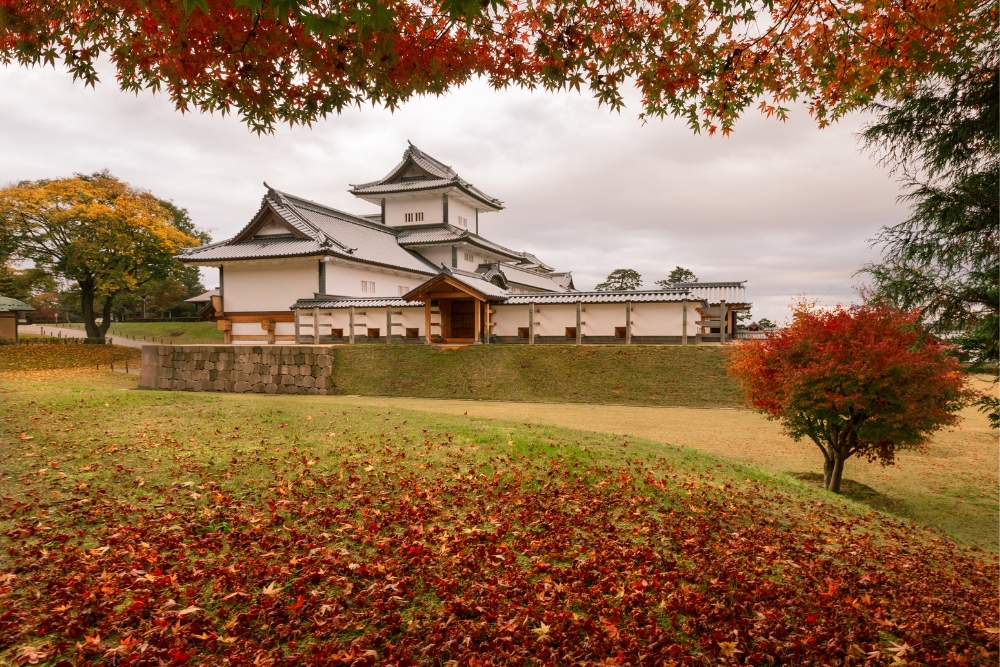
Kanazawa Castle holds immense historical significance as the former residence of powerful feudal lords in Japan. Located in Kanazawa, this majestic castle is a testament to the country’s rich cultural heritage.
A notable highlight of Kanazawa Castle is its strong connection to the nearby Kenrokuen Garden, a stunning landscape garden considered one of the Three Great Gardens of Japan. This special relationship between Kanazawa Castle and Kenrokuen Garden enhances the allure of both sites, making them popular attractions for locals and tourists alike.
One distinctive feature of Kanazawa Castle is its gate facing Kenrokuen Garden, symbolizing the harmonious relationship between the two landmarks. Visitors can walk through the gate and seamlessly transition from the castle grounds to the breathtaking beauty of Kenrokuen Garden.
The combination of Kanazawa Castle and Kenrokuen Garden creates a unique experience for visitors, as they can explore the historical grandeur of the castle and then immerse themselves in the tranquility and natural beauty of the garden. The architectural prowess of Kanazawa Castle blends seamlessly with the meticulously designed landscapes of Kenrokuen Garden, offering a truly unforgettable journey through Japanese history and aesthetics.
Together, Kanazawa Castle and Kenrokuen Garden embody the essence of Japan’s cultural heritage, allowing visitors to appreciate the country’s historical significance and natural beauty in one captivating location.
Scars and Restoration: Kumamoto Castle’s Enduring Spirit
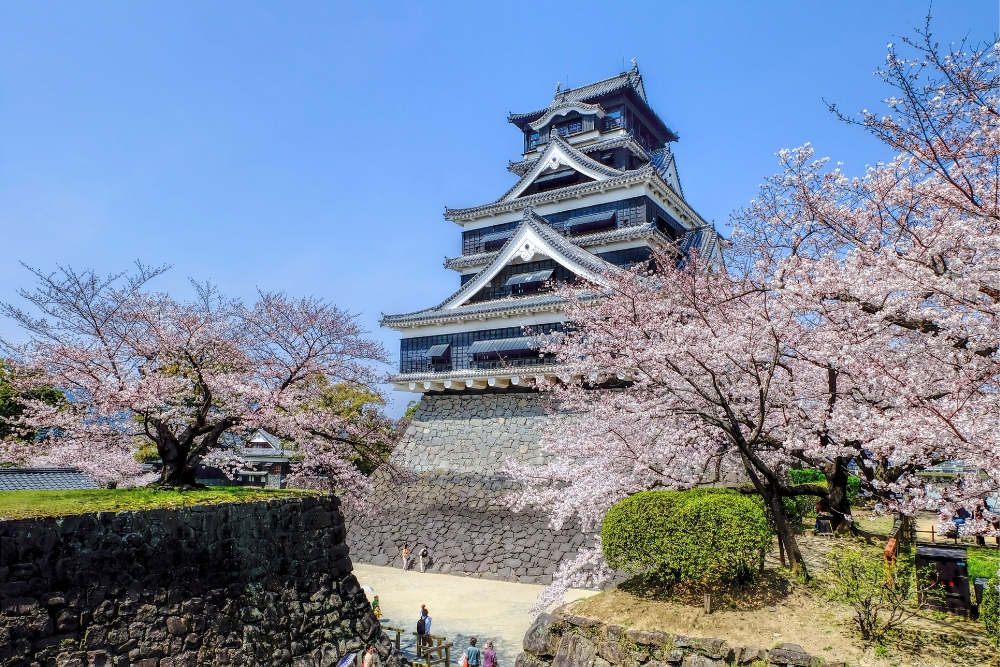
Kumamoto Castle is renowned for its extensive castle complex, originally constructed in 1607. The castle in Kumamoto City, Kumamoto Prefecture, Japan, played a significant role in feudal Japan and has a rich historical background.
In 2016, Kumamoto Castle suffered extensive damage from a powerful series of earthquakes. The earthquakes caused severe structural damage to the castle’s buildings, walls, and towers. However, the enduring spirit of Kumamoto Castle and the determination of the local community to preserve this cultural treasure have led to ongoing reconstruction efforts.
Despite the challenges, Kumamoto Castle has made significant progress in its restoration. The castle keep and the walkway are amongst the structures that have recently reopened for visitors to explore and appreciate. The reconstruction efforts have been meticulous, aiming to restore the castle to its former glory while incorporating modern safety standards.
The resilience and enduring spirit of Kumamoto Castle truly embody the indomitable spirit of the Japanese people. The castle stands as a testament to the country’s rich history and cultural heritage. Visitors to Kumamoto Castle can witness firsthand the strength and determination it takes to rebuild and preserve such iconic landmarks.
The Edo Castle and its Imperial Gardens
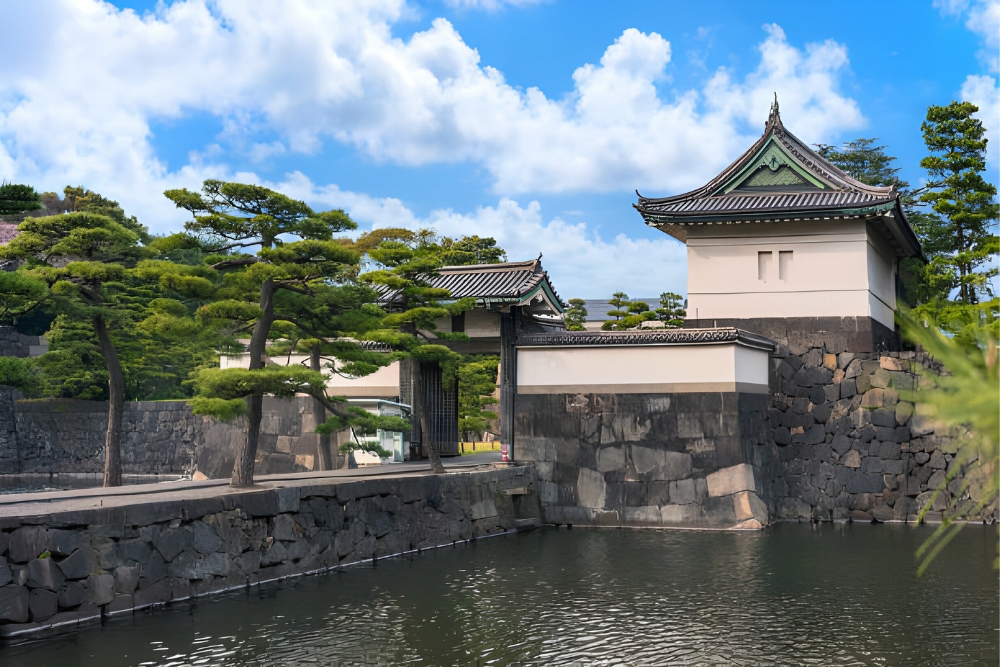
Edo Castle was a large and impressive fortress that served as the seat of power for the Tokugawa shoguns for more than 260 years. It was built in 1457 by Ota Dokan, a warrior and poet, on a flatland near the Sumida River in Edo, the former name of Tokyo. The castle was expanded and renovated by successive shoguns, especially Tokugawa Ieyasu, who made it his base in 1590 after he unified Japan. The castle had massive stone walls, deep moats, and numerous gates and towers to protect the inner palace and the shogun’s residence. The castle grounds also contained gardens, shrines, and residences for the shogun’s family, retainers, and guests.
The castle witnessed many historical events, such as the Siege of Osaka in 1615, the Great Fire of Meireki in 1657, and the Meiji Restoration in 1868. After the fall of the Tokugawa shogunate, the castle became the residence of the imperial family and was renamed the Imperial Palace. The castle’s main tower, which was the tallest and most magnificent structure in the complex, burned down in 1657 and was never rebuilt. The palace was also destroyed by fire in 1863 and by bombing in 1945. The current palace was rebuilt in 1968 and is still used by the emperor and empress. Some parts of the castle, such as the East Gardens, the Nippon Budokan, and the National Museum of Modern Art, are open to the public. The castle remains a symbol of Japan’s history and culture.
Final Thoughts On Top 10 Historic Castles In Japan
Japan’s historic castles offer a glimpse into this captivating country’s rich history, architectural beauty, and cultural significance. From the grandeur of Osaka Castle to the iconic Matsumoto Castle, each fortress tells a unique story that resonates with locals and tourists.
These castles, with their strategic locations and remarkable design, showcase the resilience and ingenuity of the Japanese people throughout the centuries. The massive stone walls, distinctive roofs, and intricate interiors make them stand out among their European counterparts.
With the convenience of the Japan Rail Pass, exploring these castles has never been easier. Visitors can immerse themselves in Japan’s cultural heritage and witness firsthand the blending of tradition and modernity.
So, add these must-visit castles to your itinerary to experience the enchantment of Japan’s historical sites. Discover the tales of feudal lords, enjoy panoramic views, and revel in the beauty of cherry blossoms. Japan’s historic castles are waiting to transport you back in time.
Photos: Canva Pro

